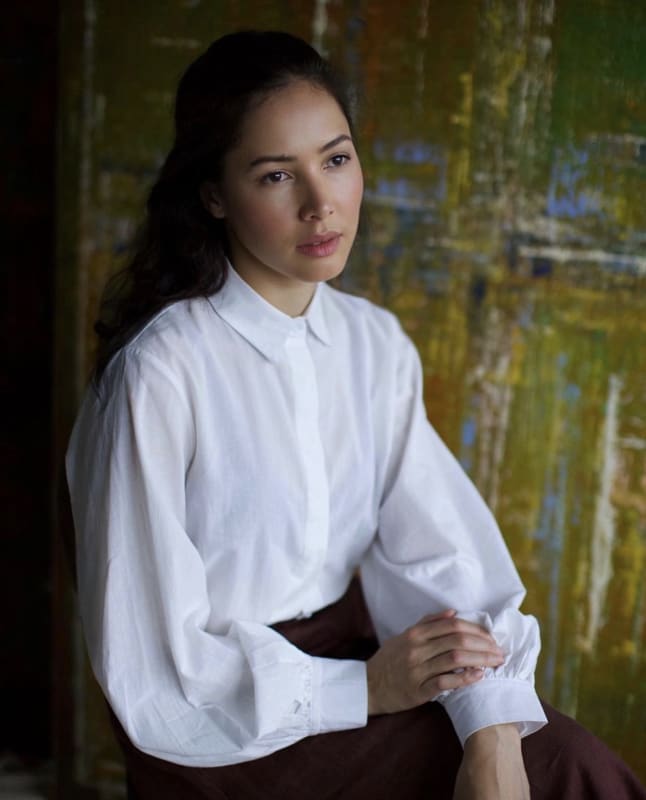Tali de Noronha is a Brazilian abstract expressionist artist based in London. She began painting in 2023, following an artistic calling that led her to develop a practice guided by intuition and independent exploration. Working primarily with oil and acrylic on canvas, she is currently pursuing an MFA in Fine Art at the Royal College of Art.
De Noronha explores themes of identity, ancestral memory, transformation, and the unseen forces that shape human experience. Rather than anchoring her inspiration in a specific geographic origin, de Noronha draws from a broader ancestral consciousness that transcends time and place.
De Noronha’s work is profoundly influenced by her complex and multifaceted heritage. Her abstract paintings delve into themes of identity, cultural resilience, transformation, and healing. Exploring the fluidity of belonging, her art examines the impact of unhealed intergenerational wounds and the ways in which historical narratives shape the present. Through her work, she meditates on the enduring influence of ancestral journeys and the resilience woven into them, urging viewers to consider their own relationships with identity, history, and transformation.
In 2023 ,her inaugural Portals series, de Noronha creates symbolic thresholds that invite viewers into spaces of introspection and self-discovery. Inspired by nature, spirituality, and the ancient rhythms of human storytelling, her work resonates with Hilma af Klint's belief in unseen forces and the spiritual worlds. Like Frida Kahlo, De Noronha explores themes of identity and transformation, while drawing on the artist Mark Rothko's ability to evoke deep emotional connection through power of colours and abstract forms. Through the interplay of colour and form, her paintings open profound spaces for reflection, encouraging viewers to connect with their inner worlds and the timeless threads that bind humanity.
In 2024 de Noronha has created a simplistic version of “Doors” including the Minimal Doors series, where she explores the intersection of simplicity and meaning. Here, minimalism becomes a conduit for transition and emotional resonance. Drawing parallels with artists like Yayoi Kusama, de Noronha highlights the power of subtle details to communicate universal truths, bridging the intimate with the infinite.
De Noronha has developed a distinctive Rhythmic Stick Marking technique, employing bamboo and wooden sticks, imbues her work with dynamic, textured layers. These tactile compositions evoke emotional depth and the essence of ancient artistic traditions. This method reflects the physicality of creation, linking her contemporary practice to the timeless act of storytelling and memory-making, transcending eras and geography.
Through her work, de Noronha bridges the past and present, creating a space for healing, transformation, and emotional resonance—inviting viewers to reflect on their own journeys and the complex histories that shape them.
Each stroke becomes an intuitive act of movement and memory, forming a tactile, contemporary form of storytelling. Through her evolving body of work, de Noronha constructs visual and emotional spaces that bridge past and future, stillness and movement—inviting viewers into deeper engagement with their own inner landscapes and shared histories.
